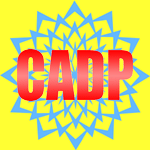| Organisation: |
Politecnico di Torino and Centro Ricerche Fiat (CRF), Torino (ITALY)
|
| Functionality: |
System Design
|
| Tools used: |
Topcased
CADP (Construction and Analysis of Distributed Processes) / TGV
|
| Period: |
2019-2020
|
| Description: |
The ISO-26262 standard is related to safety critical systems within
road vehicles and it applies to a complete automotive safety lifecycle:
management, development, production, operation, service, and
decommissioning. It provides an automotive-specific risk-based approach
to determine the Automotive Safety Integrity Levels (ASIL), a risk
classification scheme for analyzing and classifying the impact of a
particular potential hazard. During the various product development
phases, ISO-26262 recommends the use of various specification and
verification techniques, especially when dealing with items classified
at the highest ASIL levels. The most relevant recommendations about
formal methods refer to the left-hand side of the V models, where
formal specification is recommended for the description of safety
requirements and system designs at different abstraction levels,
while formal verification is recommended for upwards design phase
validation. However, the application of formal methods in industry is
still hampered by their reputation of being hard-to-use and very time
consuming, therefore onerous from an economic standpoint.
To facilitate the usage of formal methods in the automotive domain,
this work proposes a modeling approach that does not require
sophisticated skills in formal methods and is tailored on concepts
that industry people are already aware of and familiar with (e.g.,
state machines, activity and sequence diagrams, etc.). The input
language considered is SysML, which is widely known and accepted in
the automotive industry. A valuable feature of SysML is its ability
to specify hierarchical requirements with associated behavioral models,
thus enabling the management of safety requirements according to the
ISO-26262 recommendations and at the same time the formal specification
of requirements through such behavioral models.
The formal models extracted from the SysML descriptions are then used
for test generation based on requirements. A tool chain for model-based
testing was built as a plugin to the Topcased environment. The SysML
descriptions are translated first to CSP and then to LOTOS, one of the
input languages of CADP. Test purposes are produced automatically
(and possibly modified manually by the user if necessary) and used
by the TGV tool of CADP to generate test cases. The tool chain was
evaluated on a case study proposed by CRF within the VeTeSS
(Verification and Testing to Support Functional Safety Standards)
European Project. The case study was an electric gear selector, which
provides mechanical locking or unlocking of the transmission when the
parking mode is selected (by the driver or automatically), avoiding
unwanted movement of the vehicle when stopped.
|
| Conclusions: |
The proposed methodology hides the complexity of formal notations and
therefore improves usability. The case study demonstrated that a team
of engineers from CRF without specific training in formal methods
have successfully performed safety requirements specification and
verification. The proposed approach was evaluated feasible and user
friendly enough by the engineers, also showing adequate performance
of the automated tools employed.
|
| Publications: |
[Makartetskiy-Marchetto-Sisto-et-al-20]
Denis Makartetskiy, Guido Marchetto, Riccardo Sisto, Fulvio Valenza,
Matteo Virgilio, Denise Leri, Paolo Denti, and Roberto Finizio.
"(User-friendly) formal requirements verification in the context
of ISO26262". Engineering Science and Technology, an International
Journal 23(3):494-506, June 2020.
Available on-line at:
https://doi.org/10.1016/j.jestch.2019.09.005
or from the CADP Web site in
PDF  or
PostScript
or
PostScript 
|
| Contact: |
Fulvio Valenza
Dipartimento di Automatica e Informatica
Politecnico di Torino
corso Duca degli Abruzzi 24
Torino I-10129
ITALY
Email: fulvio.valenza@polito.it
|
| Further remarks: |
This tool, amongst others, is described on the CADP Web site:
http://cadp.inria.fr/software
|



 Back to the CADP research tools page
Back to the CADP research tools page